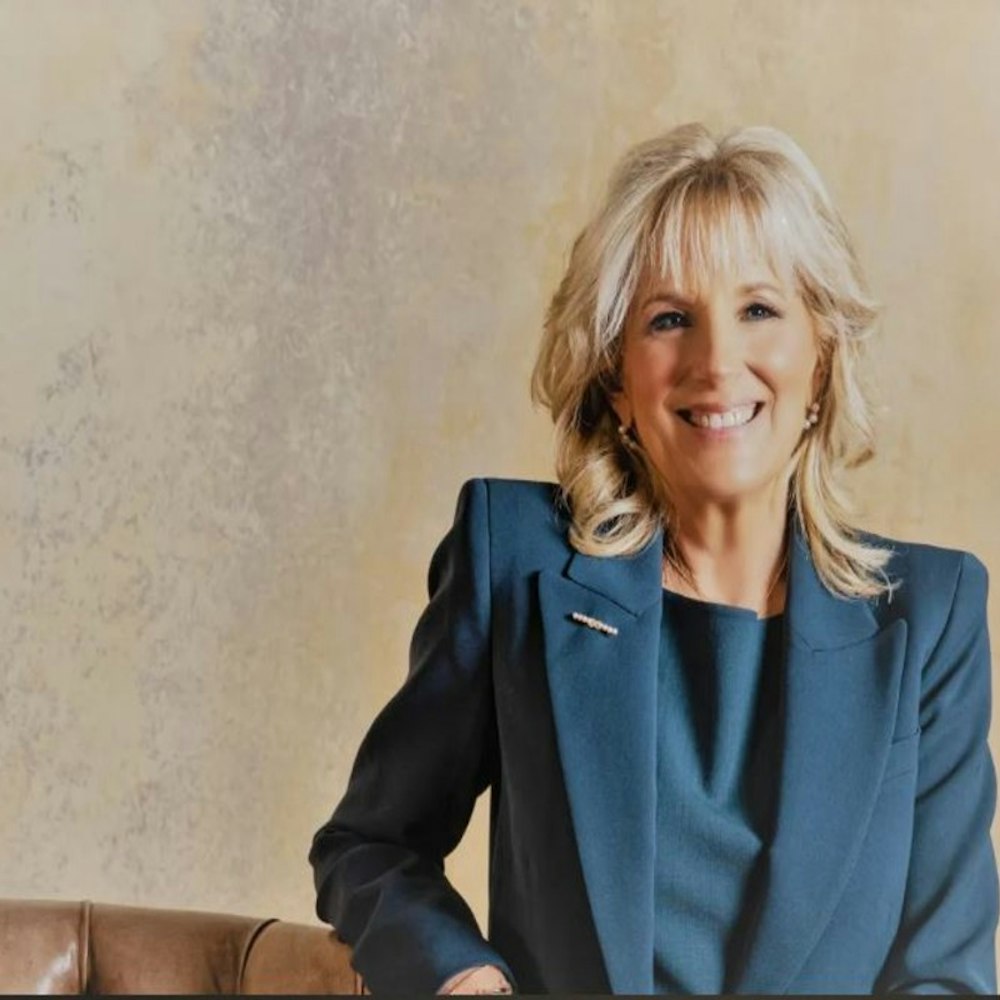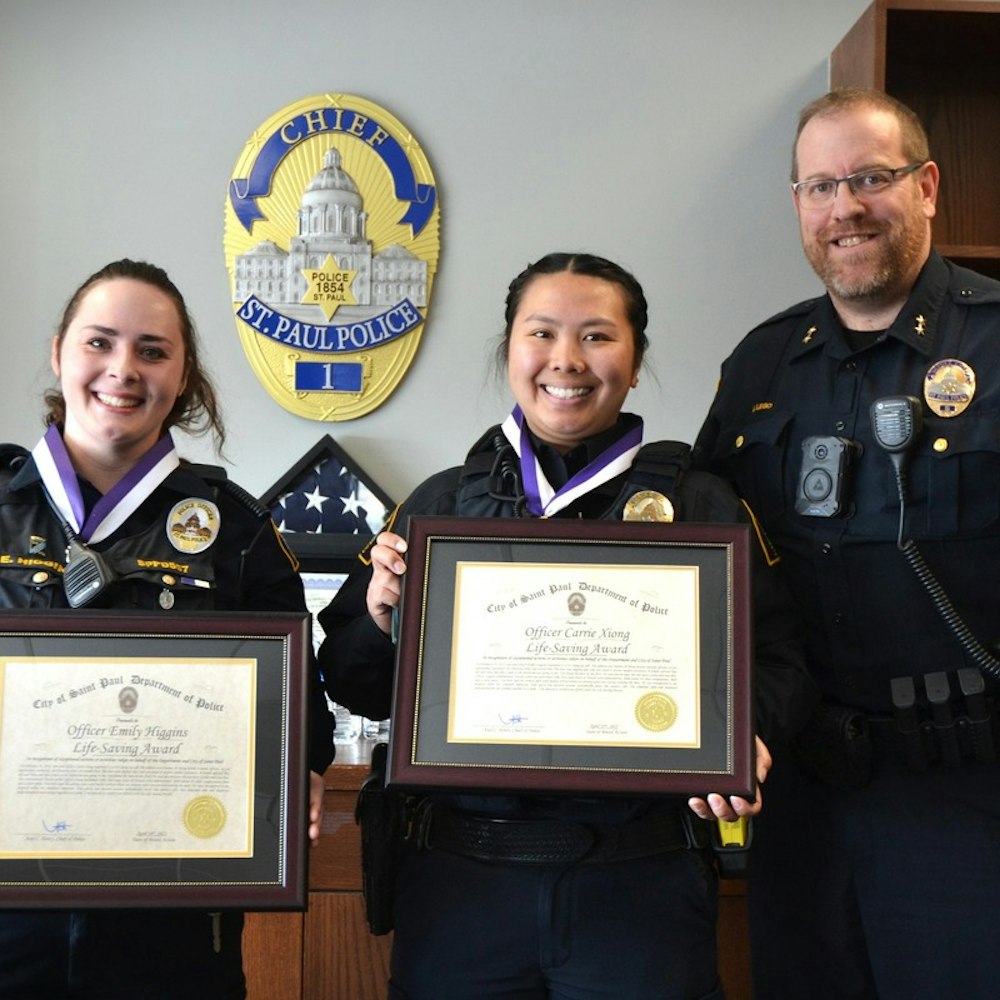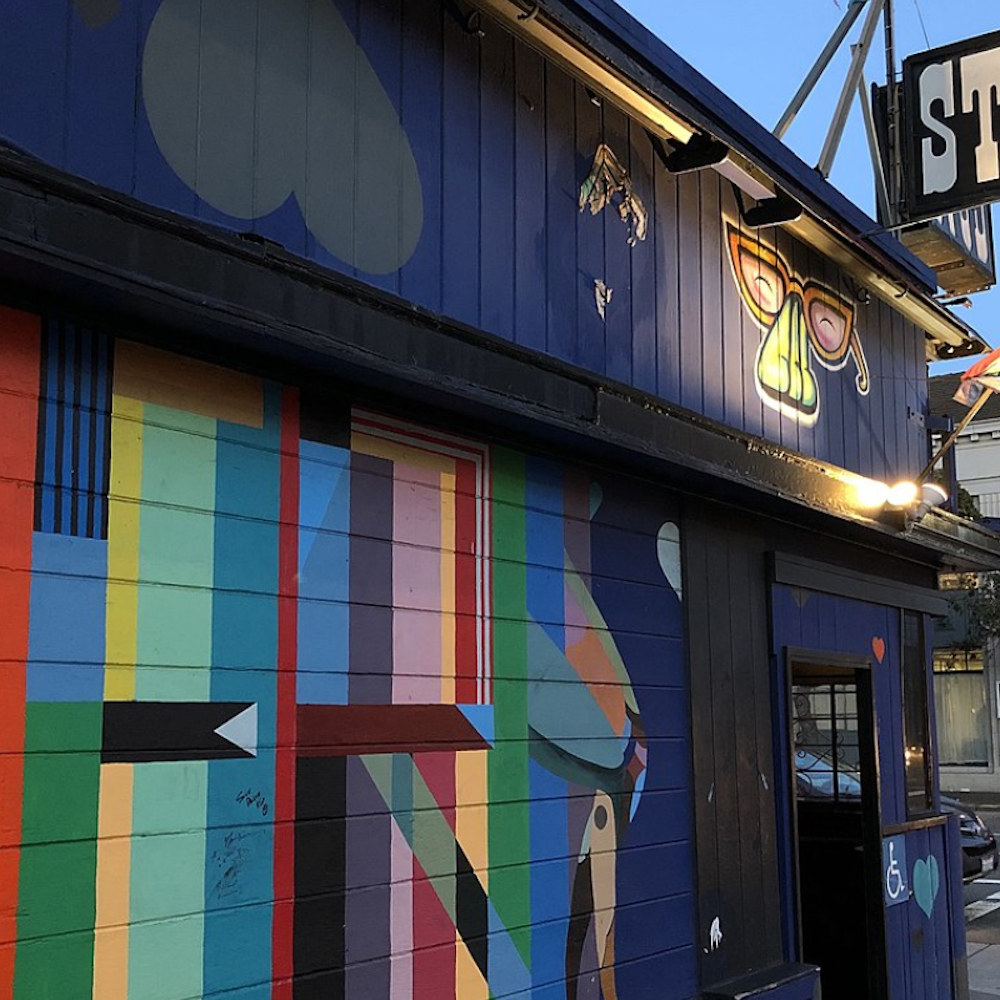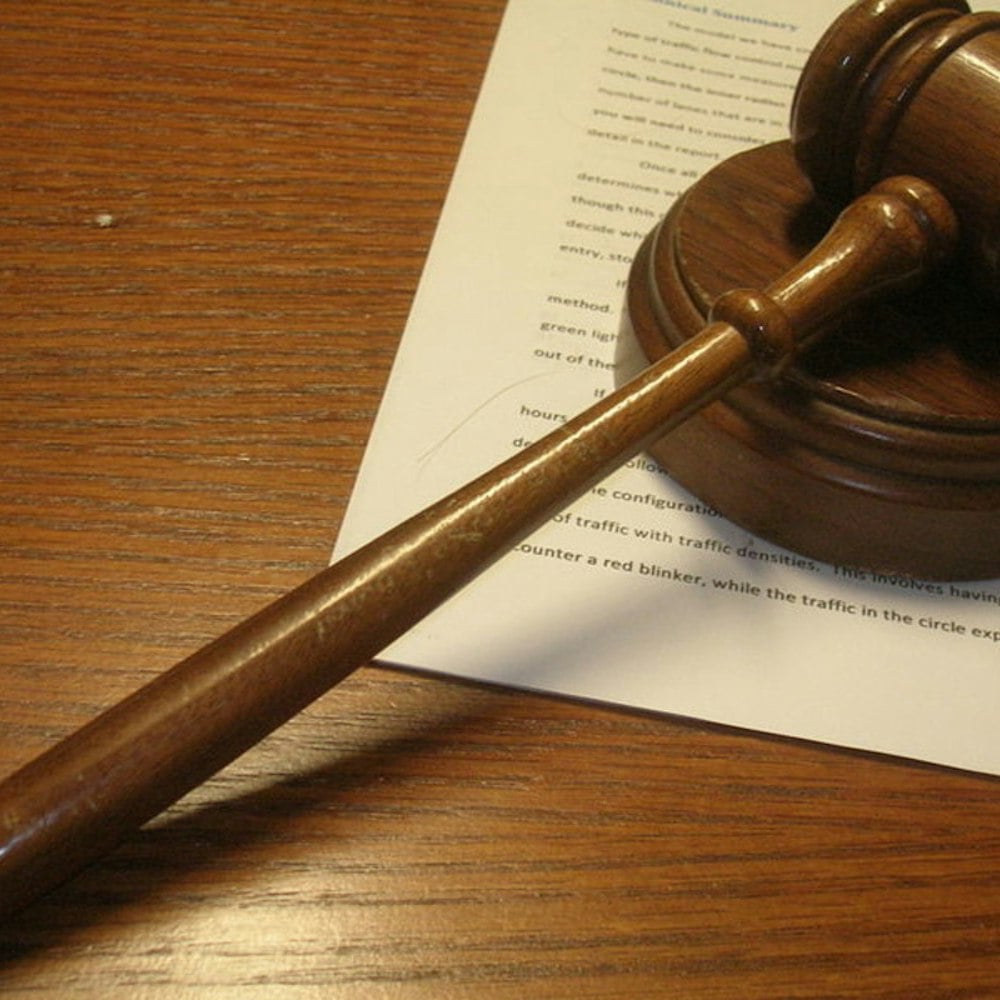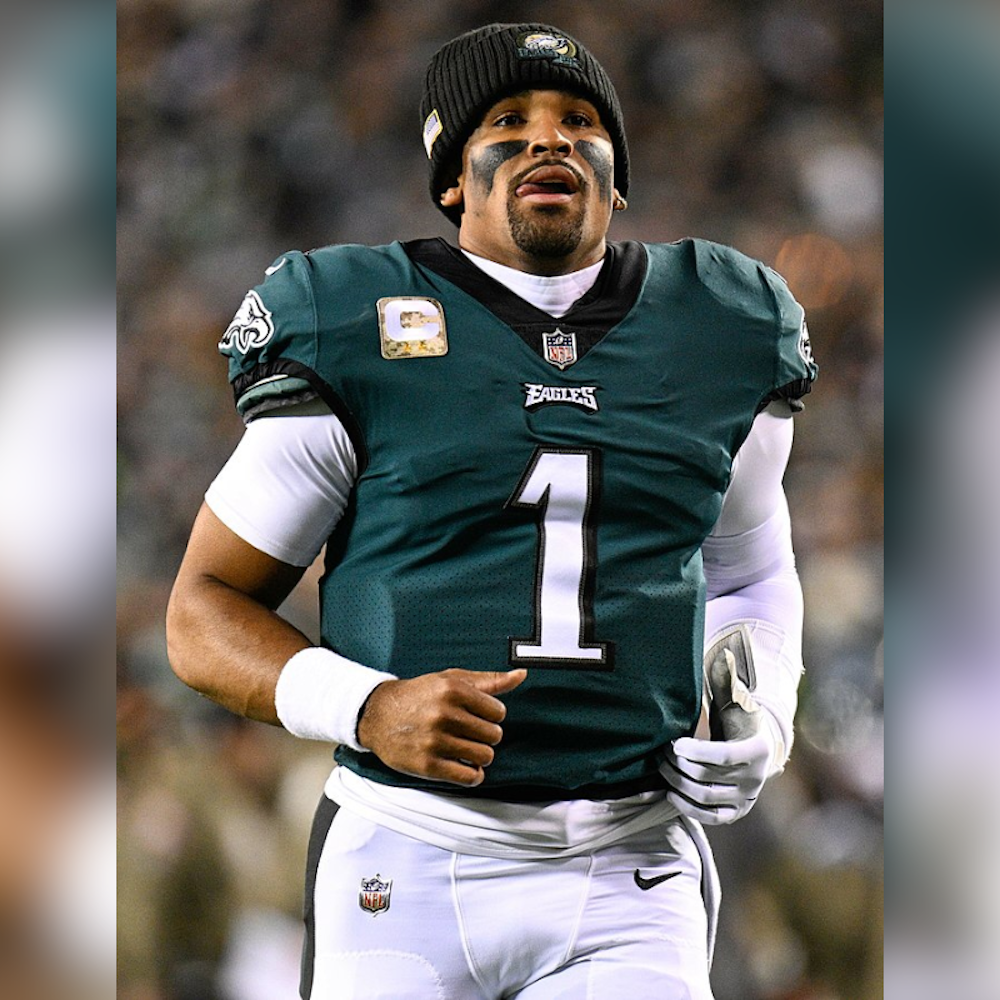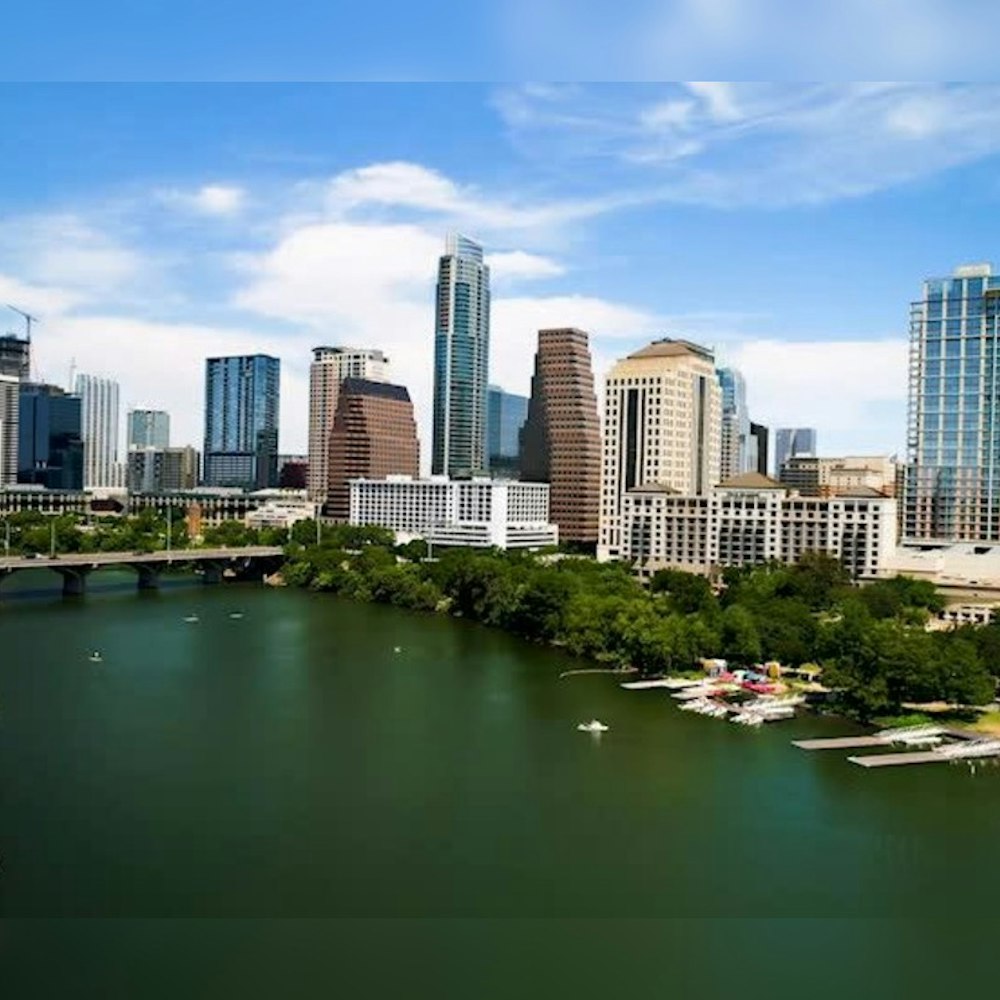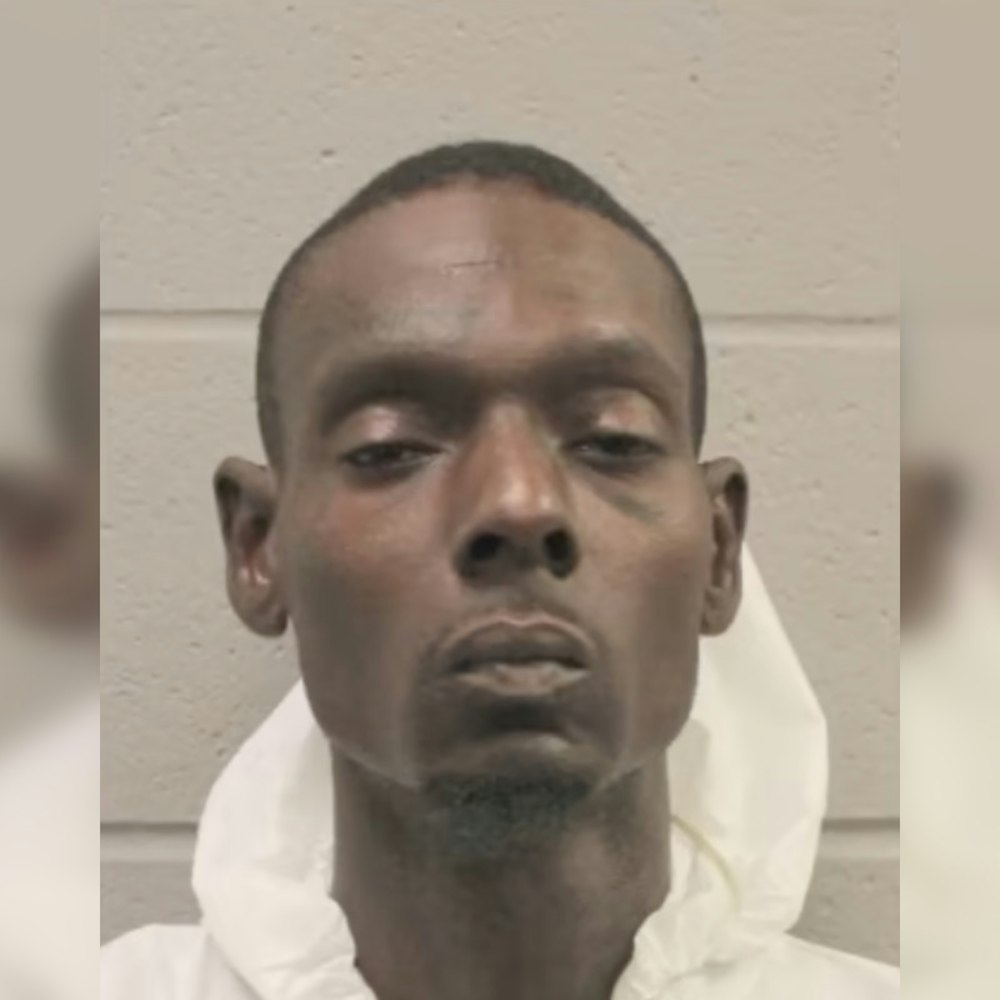
[Editor’s note: Hoodline is beginning to publish first-person stories from locals about their memories of their neighborhood and beyond. Have a story? Just let us know more — email [email protected].]
Shaquina Blake is an IT professional turned multi-media journalist. She has a travel blog at Travelista TV and is a contributor for The Guardian US.
She also grew up in The Fillmore in the 80s and 90s, and in the article below shares her memories and photos with us about those years.
Blake invites readers to share their own experiences and photos from those years in the comments below.
In Shaquina's Words
“Oh I thought you said you were from Oakland, Black people live in San Francisco?”
It’s a line I’ve heard across the Bay Area and well beyond. But, yes once upon time in a not too distant past, many more black people lived for generations in San Francisco.
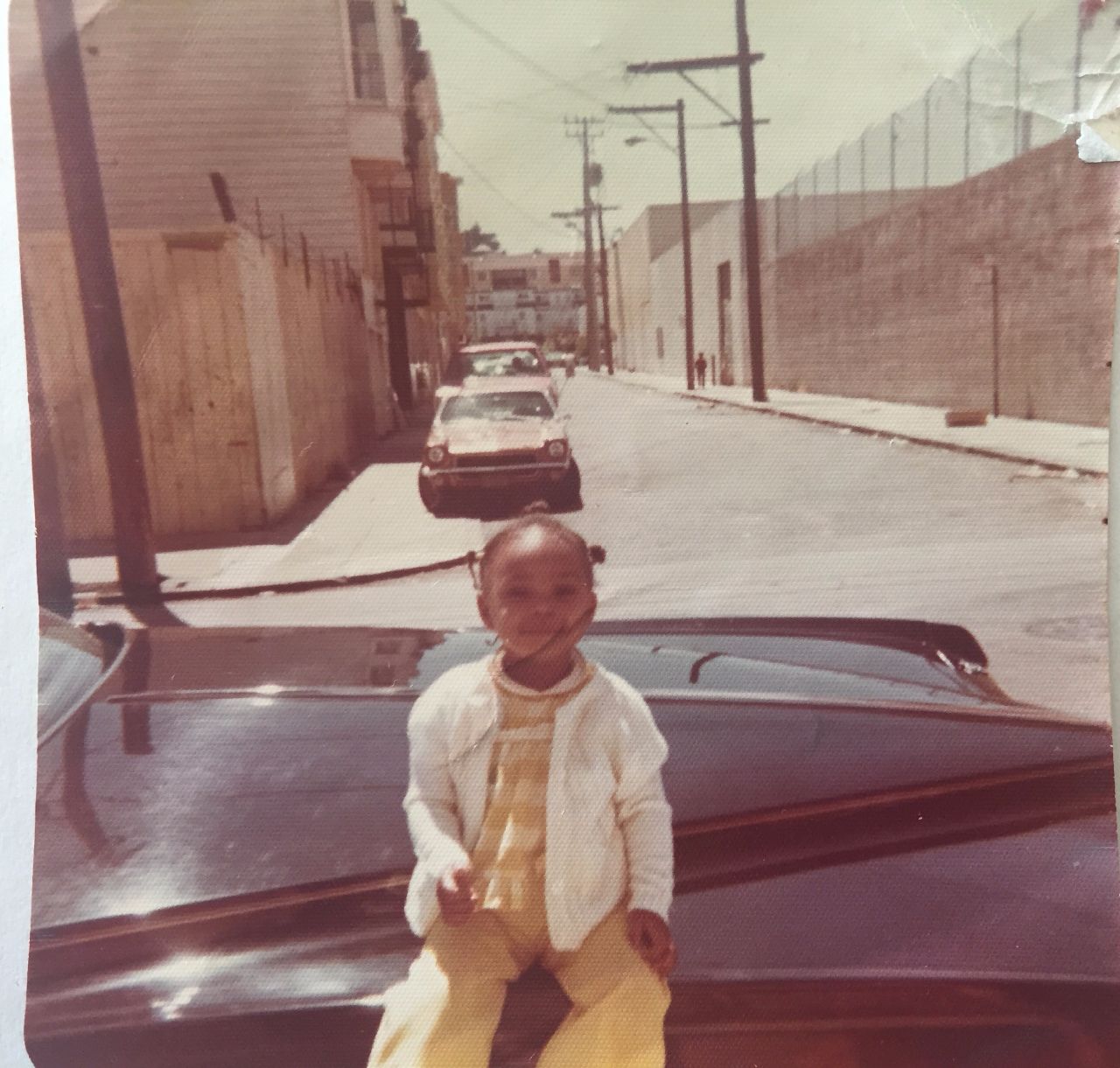 The author on Octavia Blvd
The author on Octavia Blvd
I’m a third-generation Black San Franciscan. Our grandparents came to the city in the 40s and 50s, and many worked at the shipyards in Hunter’s Point. The neighborhood I grew up in was once called Harlem West and top acts like Maya Angelou used to sing in clubs in here. The first and probably only Black mayor of San Francisco, Willie Brown lived in the neighborhood once too.
I called it Fillmore; I was never cool enough to call it “Fillmoe”, “The Mo” or “the Filthy Mo.” Those terms were reserved for the cool kids, and I was anything but — a lanky bookish kid who attended parochial school. I was on the periphery; streetwise enough not get robbed but too bookish to get swept into the madness.
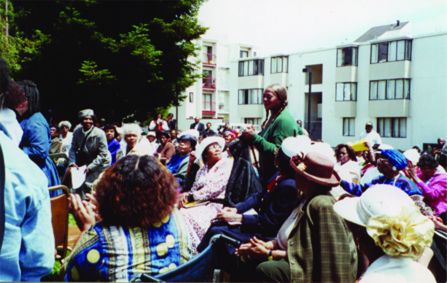 A Third Baptist Church service. Photo via TBC
A Third Baptist Church service. Photo via TBC
My shyness and a mother that was very strict about education saved me from a lot of the temptations and pitfalls that came to define Fillmore in the 80s and 90s. But it wasn’t all crack houses and gangster life. There was a rich tapestry of education, culture and political awareness woven into the fiber of the neighborhood.
Like any parents, ours wanted the best education for us. Some of us were fortunate to go the neighborhood parochial schools. In dichotomy that reflected the neighborhood, the congregation was overwhelmingly white and the student body usually black.
That was and is a main feature of the neighborhood; Painted Ladies on one block and public housing just a couple blocks away.
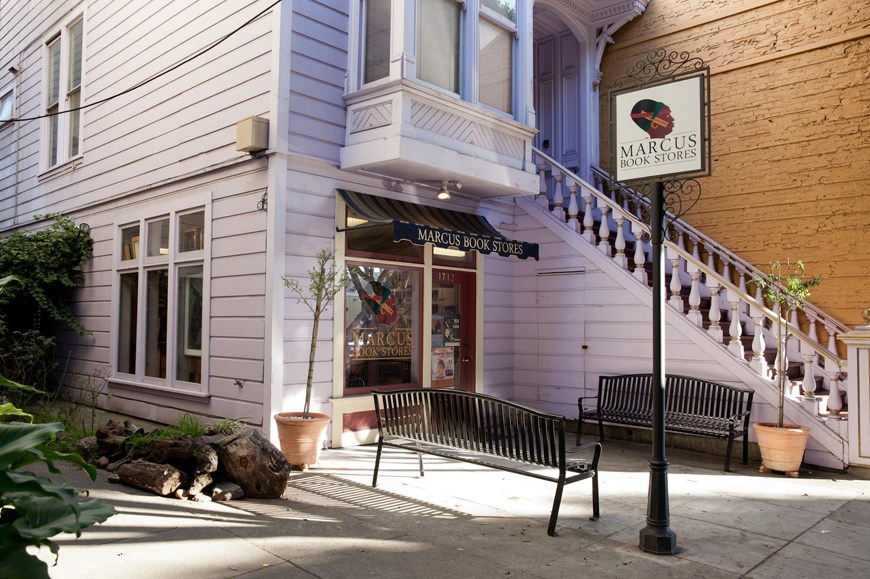 The former Marcus Books location. Photo via the San Francisco Bay View
The former Marcus Books location. Photo via the San Francisco Bay View
Officially known as St. Paulus Lutheran Church, my friend called the school St. Paulus Baptist School to reflect the denomination of those who attended.
In these schools we forged lifelong friendships, excelled academically in environments that were safe for us culturally as well as from outside influences of the neighborhood.
“The Mo” was a repository of African American historical and contemporary culture. I took Black History classes at the Ella Hill Hutch Community Center and danced at African American Art and Culture Complex. And when I was a little older I’d pop into Marcus Books to check the newest books from urban lit to African History.
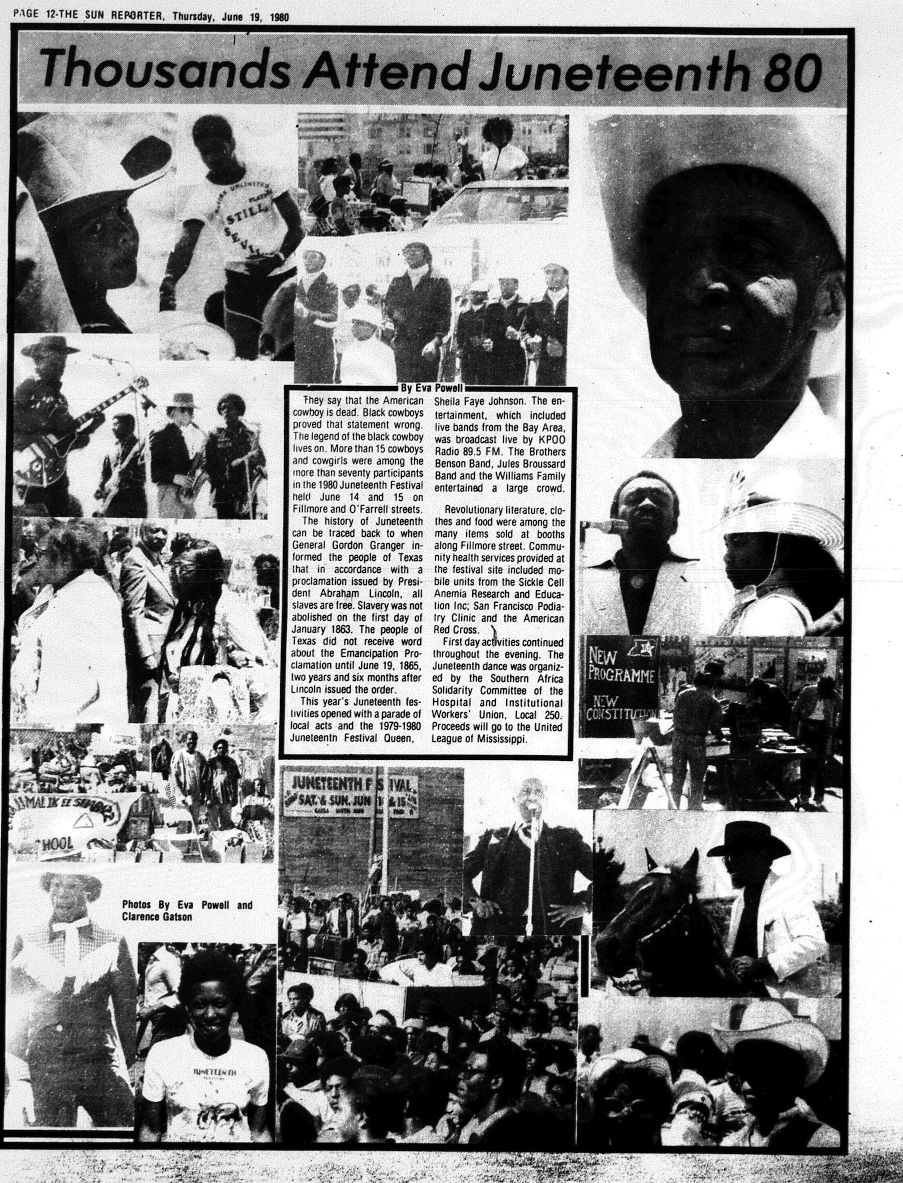 The Sun Reporter's coverage of the Juneteenth Festival in 1980
The Sun Reporter's coverage of the Juneteenth Festival in 1980
Marcus Books was the oldest Black bookstore in the country. It and the Sun Reporter kept us abreast of what was happening in the community and beyond.
The NAACP and African American churches ensured a politically active community. I marched with my Grammy and mom for Dr. King's Holiday, protested Dorothy Reed’s suspension from KGO (because she had beaded braids in her hair), and heard the call for Apartheid divestment long before the mainstream media covered it.
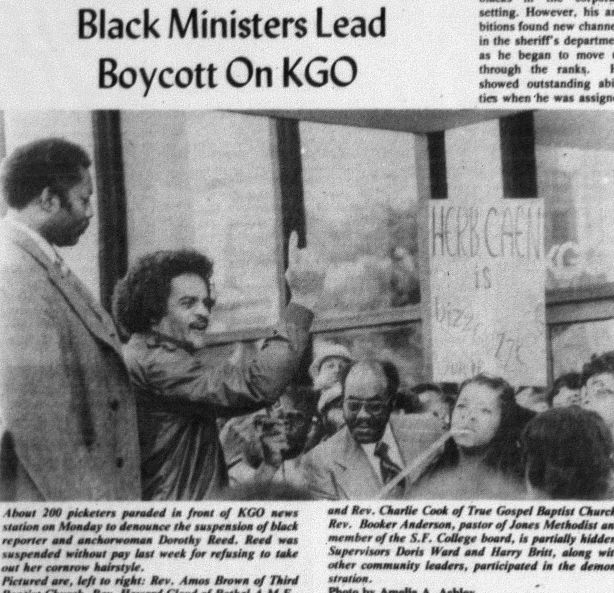 The Sun Reporter's coverage of the Dorothy Reed controversy
The Sun Reporter's coverage of the Dorothy Reed controversy
The Juneteenth Festival and Martin Luther King (MLK) celebrations were the highlight of the year. At its largest the Juneteenth Festival occupied the space where the Fillmore Center is now. It was two square blocks. We rode carnival rides, ponies and groups like the Gap Band and the Emotions performed.
As a teenager, I looked forward to MLK celebrations just a few blocks down at Civic Center. It attracted kids from all over the city. Local talent performed and the event was political rally but for the teens it also doubled as a great place to mingle. We rocked our best ‘fits, hung with our friends and hoped to meet a boy or girl.
 The cover of a 1981 Sun Reporter issue
The cover of a 1981 Sun Reporter issue
Our Sundays were a day of music, and in the mornings it was church time. On just about any given street cars double-parked, the churches packed with parishioners, and the sound joyful noise spilled out into the street.
Sunday afternoons we listened to different kind of music, with almost the same religious fervor: rap music. While mainstream radio shunned hip-hop, KPOO, the neighborhood radio station embraced it.
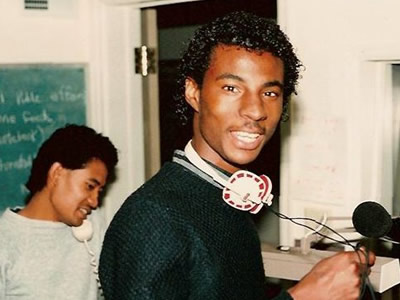 DJ Marcus Clemmons on the air. Photo via KPOO
DJ Marcus Clemmons on the air. Photo via KPOO
From 3pm to 7pm DJ Marcus Clemmons, owned the airwaves and had kids throughout the Bay Area enraptured by what would become the music that defined our generation.
Fillmore Changes
I remember hearing whispers of my friend’s parents moving Hercules, Vallejo, and Pittsburg, priced out of the housing market and wanting to escape the soaring crime of the crack epidemic they purchased homes in the East Bay. Many residents of Fillmore didn’t have a choice — they had to leave as housing projects were being torn down in the post-urban renewal flux of redevelopment efforts.
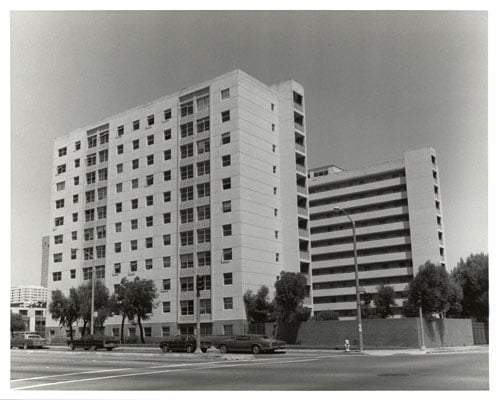 The Pink Palace in 1982, before conversion. Photo from the San Francisco History Center/SFPL via FoundSF.
The Pink Palace in 1982, before conversion. Photo from the San Francisco History Center/SFPL via FoundSF.
First the Pink Palace was converted in senior housing, then Yerba Buena Plaza (Turkwood) came down, next Buena Vista Plaza (OC), Hayes Valley and Page St. projects. They were all rebuilt, into more livable town homes but many of those families relocated and never returned. By the time my generation came of age in 90s, it was foregone conclusion that we were leaving the city too.
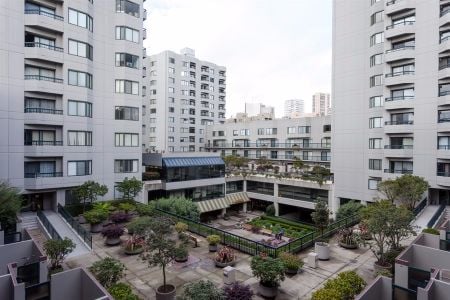 Opera Plaza in recent years
Opera Plaza in recent years
While the neighborhood was being “reformed” from the inside, luxury condos and apartments crept in. First on the southern border of Fillmore at Van Ness the Opera Plaza completed in 1982.
The next year, one block north, pricey condos opened on Gough and Golden Gate Ave. By the late 80s construction started on expensive townhomes directly across the street from OC projects on Laguna. In the 90s, the Fillmore Center apartments were completed, setting a trend really for high price housing in a part of the city that had been traditionally working class and low income.
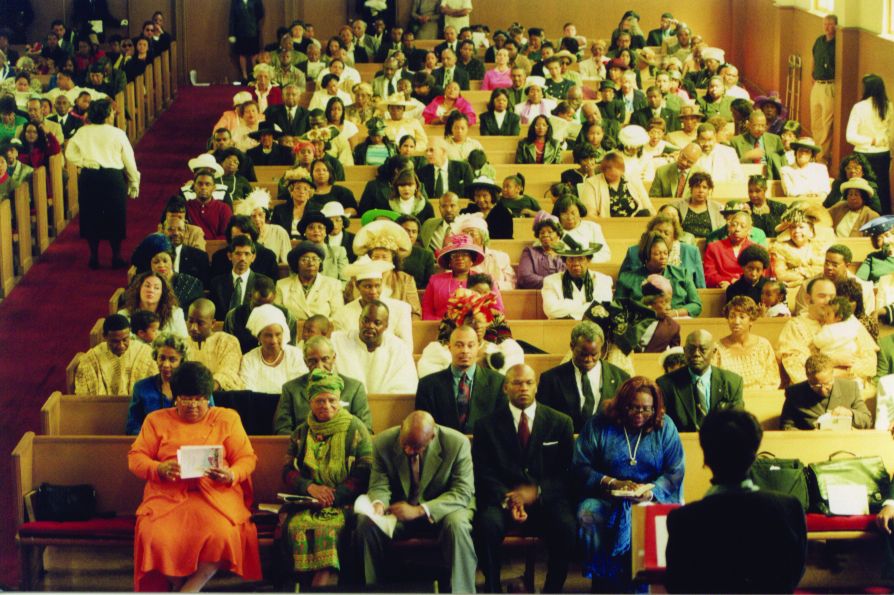 A church service in the sanctuary of Third Baptist Church. Photo via TBC
A church service in the sanctuary of Third Baptist Church. Photo via TBC
This generation was maybe the last to call the neighborhood “Fillmoe”, Lower Pacific Heights now encroaches on Fillmore’s traditional boundaries, and Hayes Valley cannibalizes it from within.
The San Francisco black population has just about halved since the nineties and as young adults have replaced children in the neighborhood, the private schools I attended are gone.
The MLK celebrations and Sun Reporter have shifted to the Bayview while Marcus Books was forced to leave the city.
The neighborhood has cleaned up from “The Filthy Mo” but scrubbed it clean of something else: a vibrant African-American culture.


